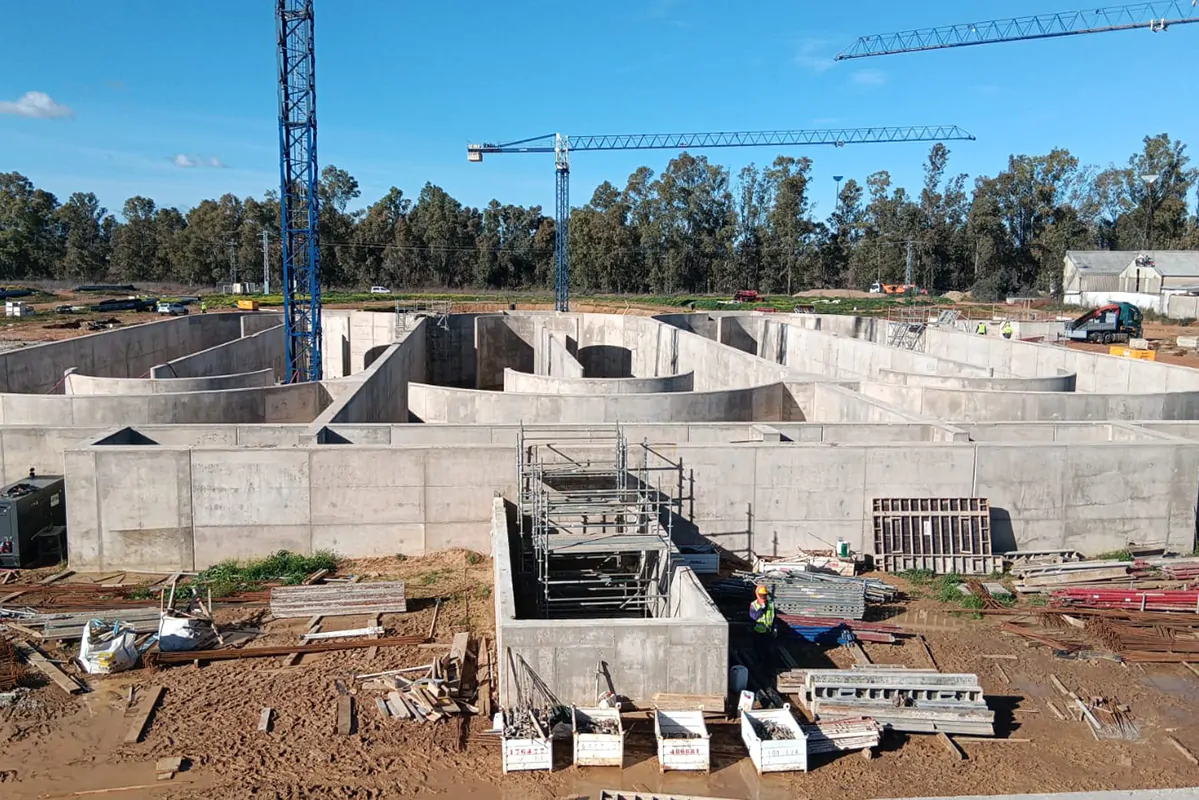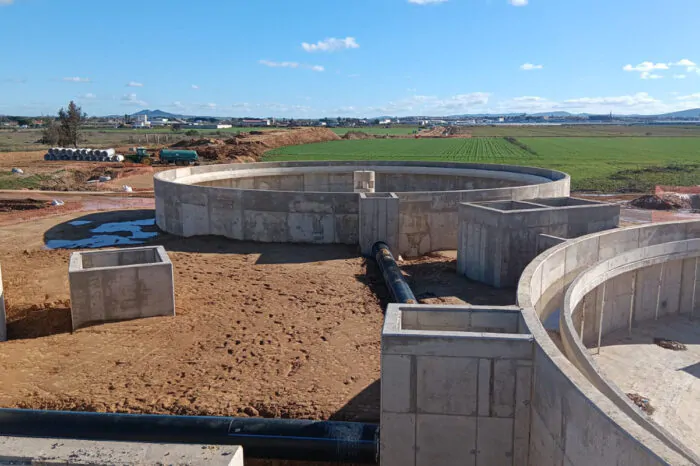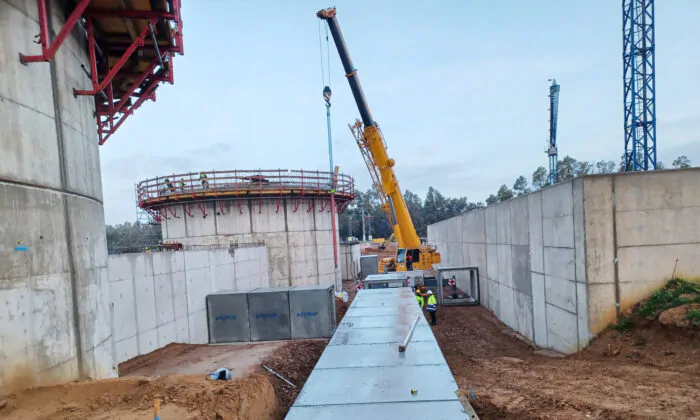
21/03/2025
Sando Construcción, in a joint venture (UTE), is carrying out the wastewater and stormwater management works for the towns of Villanueva de la Serena and Don Benito, commissioned by Spain’s Ministry for the Ecological Transition and the Demographic Challenge. The €66 million project includes the construction of a new WWTP (Wastewater Treatment Plant), six stormwater tanks, and an 18-kilometre pipe network.
According to the Guadiana River Basin Authority, this project aims to address the current deficiencies in the sanitation and wastewater treatment systems in both towns. The new WWTP will feature state-of-the-art electromechanical equipment, new flow regulation structures, and upgraded outfalls and collectors with higher capacity.
The project involves collecting wastewater from the urban centres and industrial zones of both municipalities. Regulation structures will manage flows via six stormwater tanks, which will be strategically located throughout the system and offer a combined capacity of 22,800 m³. A regulation basin will control rainfall overflow.
Sando Construcción is executing this infrastructure with the support of Sando Agua, the company’s specialist in innovation within the integrated water cycle. The new WWTP is designed to treat wastewater for a population equivalent of 79,634 inhabitants. It will process an average flow of 1,115 m³/h, peak flows of up to 1,928 m³/h, and a maximum pre-treatment flow of 4,459 m³/h.
The project encompasses works for the arrival, pretreatment, and coarse solids removal; screening, grit removal, degreasing, and primary sedimentation; the construction of a biological reactor, carousel-type with prolonged aeration and nutrient reduction; secondary sedimentation; and tertiary treatment, including physicochemical treatment, screening, and disinfection.
Sando Construction will implement actions related to sludge management, including primary and biological sludge thickening, sludge heating and anaerobic digestion, and sludge conditioning and dewatering. Additionally, deodorisation will be carried out through odour treatment using bio trickling or biofiltration.
Lastly, in line with circular economy principles and the use of renewable energy, the company will construct a gas line with a gasometer, boiler, flare, and cogeneration, along with a 1,319 kW photovoltaic solar plant.
The wastewater collection system includes a robust 18-kilometre network of pipelines and auxiliary infrastructure to channel effluent to the new WWTP. This includes:
– 13 km of reinforced concrete piping with elastic joints
– 1.2 km of pipe jacking under Roads, canals, and Railway lines
– 1.2 km of concrete galleries constructed using prefabricated reinforced frames
– A 2.6 km microtunnel, 1,200 mm in diameter, excavated using a closed shield with wet soil extraction technology
This ambitious infrastructure project is fully aligned with Sando’s ESG (Environmental, Social and Governance) strategy and its commitment to sustainable urban development. It contributes directly to several UN Sustainable Development Goals (SDGs):
· SDG 6: Clean Water and Sanitation
· SDG 9: Industry, Innovation and Infrastructure
· SDG 7: Affordable and Clean Energy

